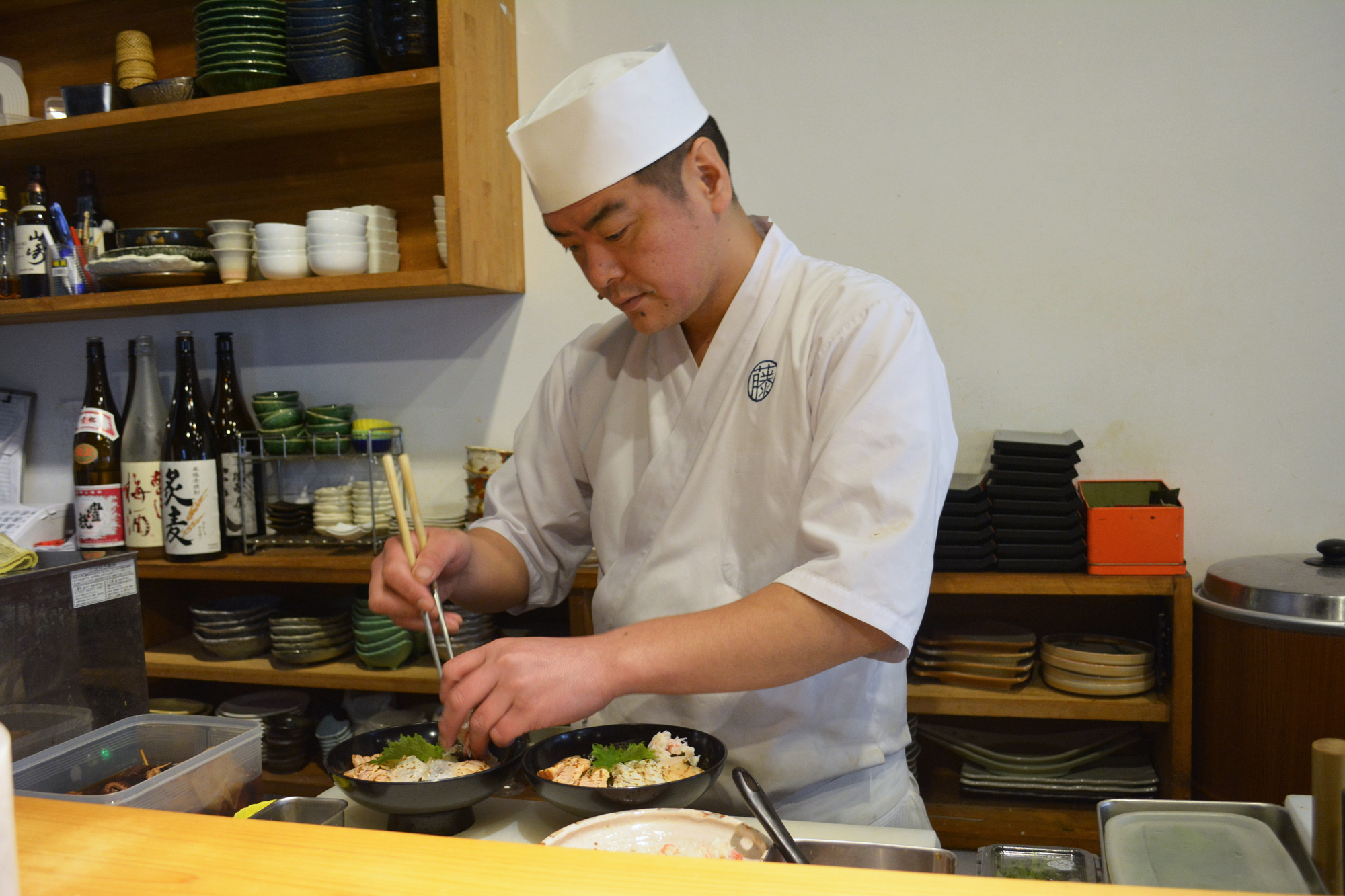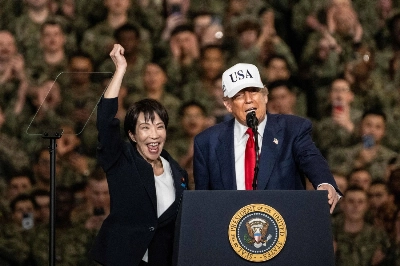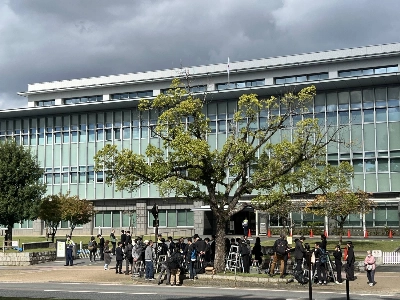Fujimoto is that rare kind of sushi restaurant that has covered many bases without tripping over any of them along the way. Take the price, for example. While the omakase (set menu) options for lunch and dinner are priced between ¥3,500 and ¥6,000, the a la carte menu starts from around ¥900 for a selection of bite-sized nigiri sushi. Also, with its breezy and informal atmosphere — background jazz as opposed to muzak — it's more suggestive of a cafe.
I had made a reservation, but wound up arriving late — apologizing and sweating profusely as I entered. Chef and owner Futoshi Fujimoto wasn't in the least bit bothered. Most of the lunchtime crowd didn't have reservations, and nearly all of them ordered Fujimoto's version of the venerable kaisendon, a gorgeous and generous bowl of sashimi on a bed of rice. Although I didn't opt for this, I did remark on its popularity. According to the chef, it's a nationwide trend, the result of favorable media attention.
Instead, I ordered the shinmachi course, named after the restaurant's location. It's reasonably priced (¥3,500), and the menu wends its way through sashimi, tempura and sushi with Fujimoto throwing in a few understated curveballs when he can. Of these, I particularly enjoyed the tempura serving: accompanying bamboo shoots and covered in a thin layer of teriyaki sauce were two dainty smelt, petrified in a crusty tempura coating. While they looked like ayu, a relative of the smelt, in this dish Fujimoto served wakasagi, a type of smelt from Hokkaido, plucked from beneath the ice with tiny hooks. Despite their diminutive size these fish boast an formidable taste, and one that has no trace of that tinge of bitterness that sometimes accompanies ayu.


















With your current subscription plan you can comment on stories. However, before writing your first comment, please create a display name in the Profile section of your subscriber account page.